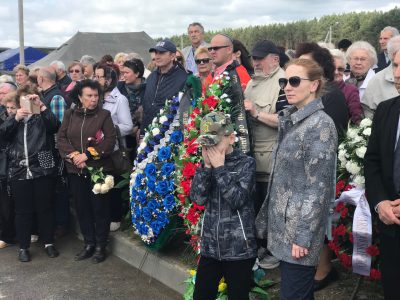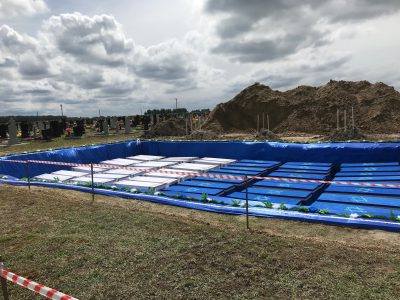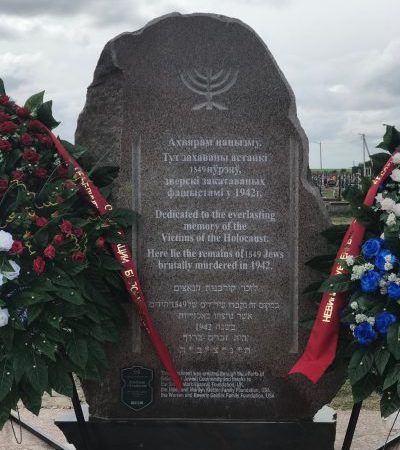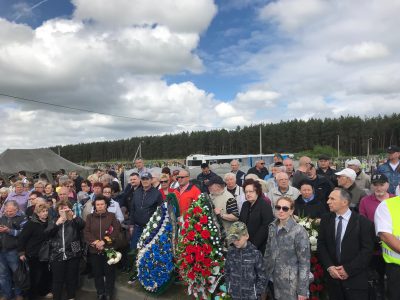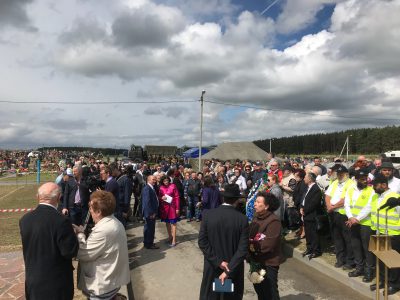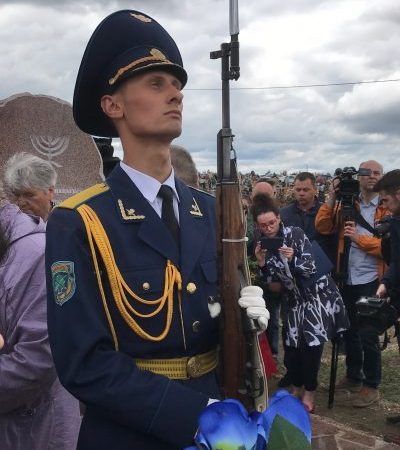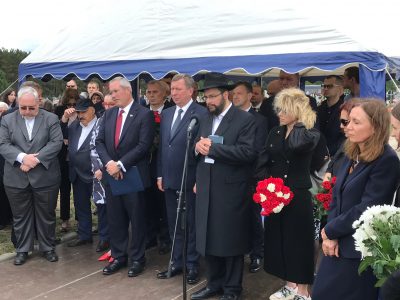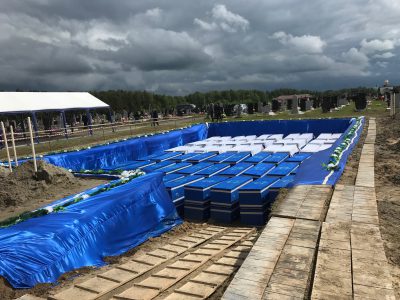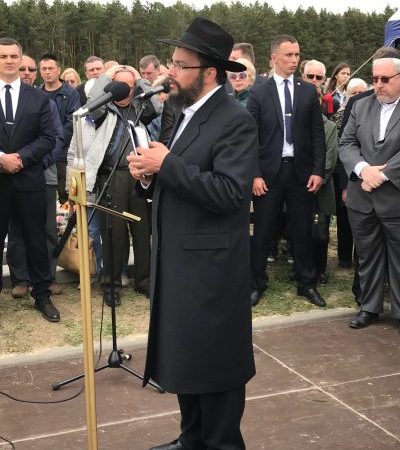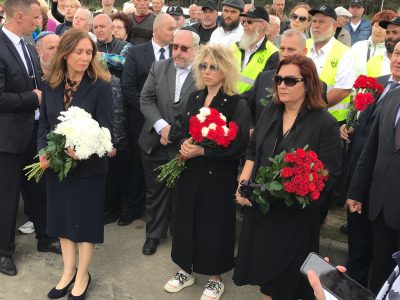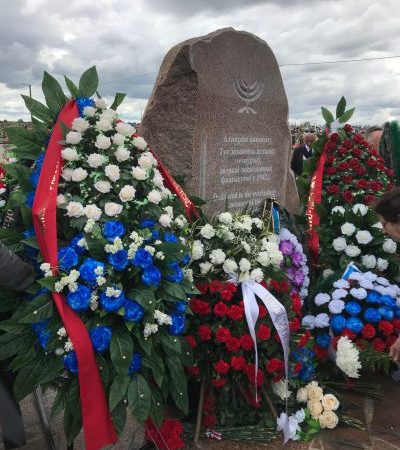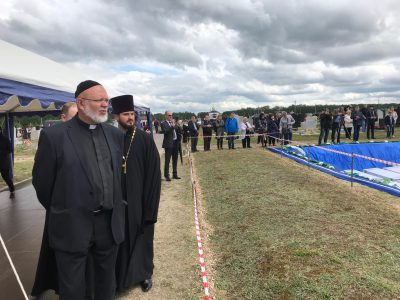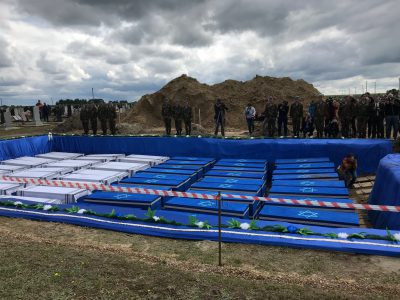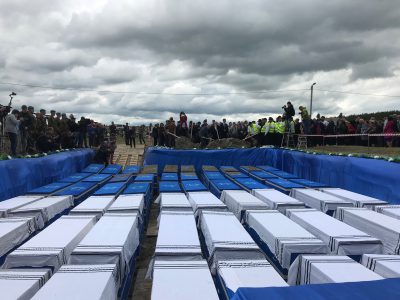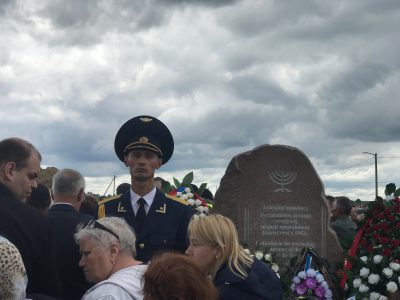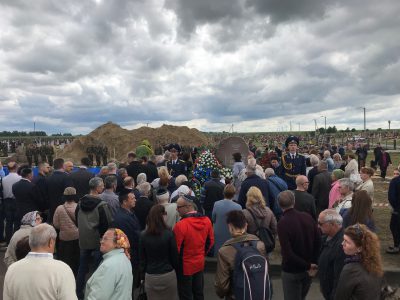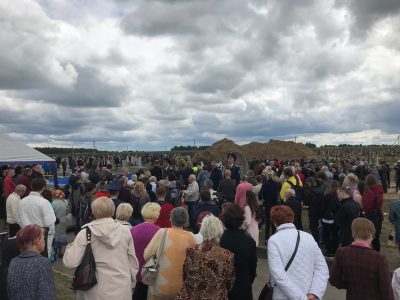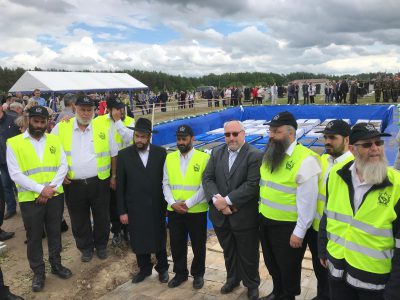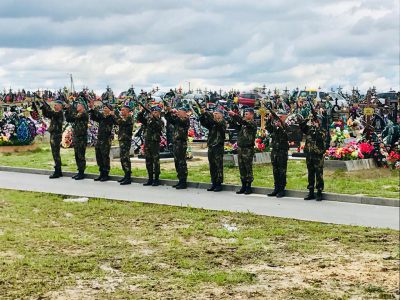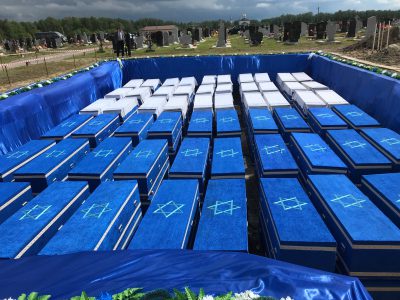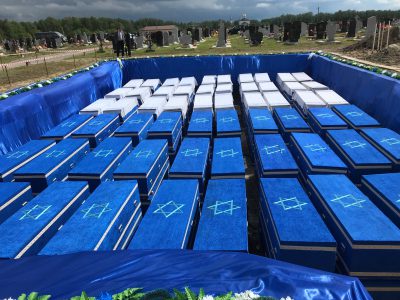Remains of Holocaust Victims Were Buried in Brest
The remains of 1,214 Jews, murdered during the ultimate liquidation of the Brest ghetto in October 1942, were discovered in January this year at a construction site in Brest, Belarus. One hundred and twenty coffins were ceremoniously buried at a suburban cemetery on May 22nd.
Human remains were discovered in January. It was then that excavators operating at an apartment building construction site – on the corner of Kuybyshev Street and Prospect Masherova – began to dig out fragment of human corpses. This caused protests by activists and historians, who led to the suspension of the construction works in the area where mass graves were located.
Behind every crime there is a single person, and its scale depends on the degree of moral destruction of the moral backbone of its perpetrator, said in Brest Albert Stankowski, Director of the Warsaw Ghetto Museum. “Every crime leaves a trace, no matter how hard the criminal tried to conceal it. We have gathered here to talk about the mass killing of almost one and a half thousand people, executed since mid-October 1942 by the German Nazis when the ultimate liquidation of the Brest ghetto had begun. We are here to bear witness once again to the tragic end of the population of Jewish nationality – the mission of the Warsaw Ghetto Museum is to commemorate the Holocaust of Polish Jews not only in the area of the closed Jewish district established by the Germans in Poland’s capital, but in every ghetto where Polish citizens were forced to stay.”
When the war between Poland and Germany broke out in September 1939, a part of Polish Jews came under the jurisdiction of the USSR which annexed the former eastern provinces of Poland – 202 thousand square kilometres. One and a half million Polish citizens of Jewish nationality found themselves there. The fate of Jews living not only in the area of the borderland was sealed after the outbreak of the German – Soviet was in June 1941. In four days, German troops reached Minsk, and in mid-July almost all of Belarus and most of western Ukraine fell into German hands. All this happened so quickly that for a part of the Jews inhabiting these territories it was practically impossible to escape. The Germans executed the Jews almost immediately or they organised short-lived ghettos. The Brest ghetto existed from 16 December 1941 until the autumn of 1942.
The liquidation of the ghettos had already begun in the autumn of 1941. The executions were carried out by the Einsatzgruppen and local police troops. The activity of the Einsatzgruppen in the summer and autumn of 1941 meant the death toll of approximately one million Jews. The most desolate places were chosen for the place of execution: forests, ravines, abandoned factories, located some distance from the inhabited zone. While 17 thousand prisoners of the Brest ghetto were executed in the forest near the Bronna Góra (Bronnaja Hara) railway station, in the Brest ghetto itself, in its backyards, around 5 thousand people were shot in October 1942.
“Fate is deceitful, and human nature – complex,” Director Stankowski continued. “The past resembles the present and repeats itself in it, also with very bad phenomena, which shows us that history is not a logical sequence of events, but rather a continuity composed of individual incidents. The same sins and similar acts of violence recur. Aleksei German, the outstanding Russian director, said: ‘I am not a doctor. I am pain.’ Cultural institutions and institutions dealing with education – such as the Warsaw Ghetto Museum which was established last year – do not cure social illnesses. You should not expect of historians or educators that they will provide remedies. We only present certain ideas. We formulate the essence of the problem. We ask questions. It depends on society how it will relate to them and what answer it will give. A change for the better can only take place when the past is subjected to analysis and reflection. There are countries in which history recurs as if in a vicious circle, does not teach anyone anything, and even the ethical foundations relating to human relationships do not exist. But where human dignity is not respected, where lawlessness prevails, and individual life does not count, there is only room for degradation and disintegration. ‘It would be very simple if everything were only politicians’ fault,’ Svetlana Alexievich wrote.”
„The awareness of history is no guarantee for the future, but the constant reminding of the horrible events of the past – the crimes of genocide – it was and is needed all the more, the more the memory of them is becoming blurred. The fact how many of us have gathered here today testifies to the fact that we crave the truth, especially when it is losing its vivid colours over time. The strategies and testimonies of this memory are different – non-verbal, traumatic, heroic… All of them – as every truth and memory – uncomfortable, but you cannot escape them since they are historiography’s foundations. Vasil Bykaŭ, the great Belarussian writer, candidate for the Noble Prize in Literature, wrote in “Sign of Misfortune” that “everything belongs to the past that is contaminated with decay and non-existence”, but also that “human memory is not subject to the passage of time.” It is the only one that is victorious over time because it prolongs our life.”
“Today, gaining more and more applause not only in European societies, the extreme right, the growing racism and the reviving anti-Semitism are a breeding ground for the growing threat to tolerance, respect for our fellow-men’s dignity, for safety, and liberty. “Watch over the human inside yourself,” Svetlana Alexievich wrote. I agree with this call and I repeat it after the laureate of the Nobel Prize in Literature” – with these words Director Albert Stankowski concluded his speech.
The exhumations are still carried out by the 52nd Independent Search Battalion of the Defence Ministry of Belarus.
Anna Kilian


